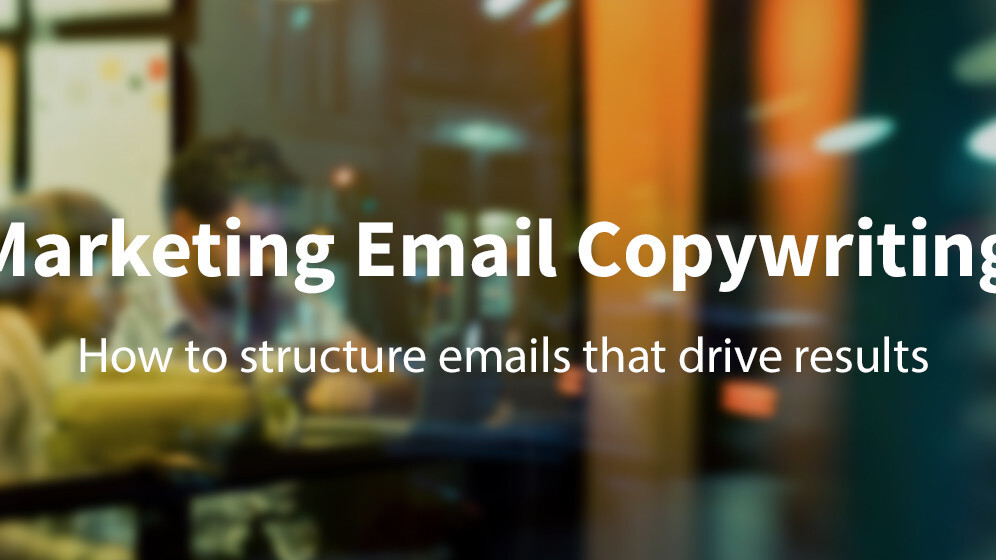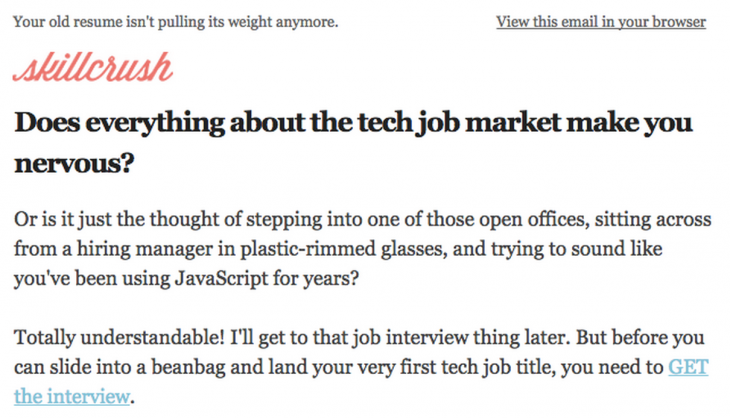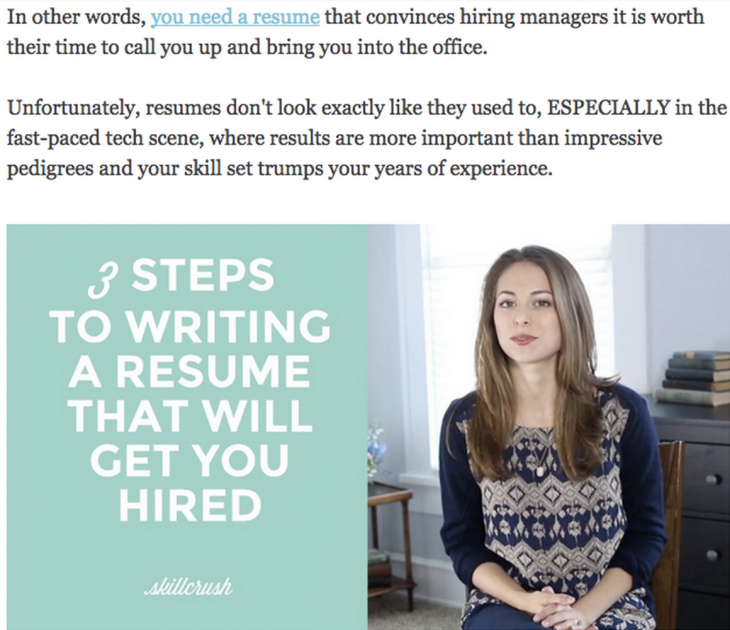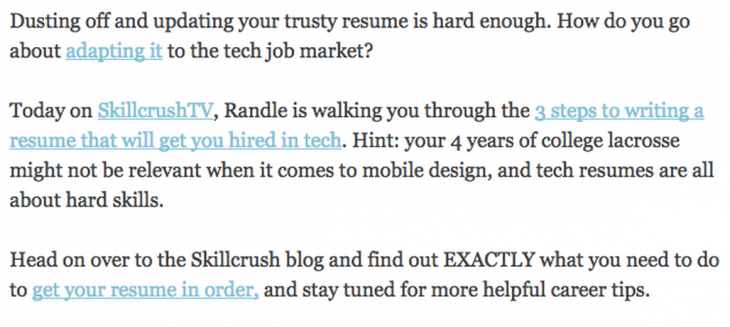
Janet Choi is the Marketing Manager at Customer.io.
Most writing in email marketing is terrible.
Experiencing lame email copy can be educational on what not to do and motivate you to aim higher, if anything. But what are some positive techniques used to craft compelling emails?
Here’s one simple but powerful method: AIDA, a time-tested copywriting formula that’s been used in marketing and advertising in all types of media for over a century.
AIDA stands for Attention, Interest, Desire, Action — four building blocks that combine to motivate your readers to your call to action, from making a purchase to reading a blog post to filling out a survey.
The elements of AIDA
Attention
Attention is the key that gets busy people in the door.
People glance at their inbox or notifications and make a split-second decision whether to open an email or not. (You know you do it too!) That’s why the subject line of your email is so pivotal.
So make sure that subject line has some oomph and piques the reader’s curiosity. Think about a line — or word (a succinct “Hey” helped raise $690 million) — will prompt someone to see what’s behind your email’s door.
Now there’s not just one but two most important lines in an email: the subject line and the first line of the email. That first line, which is often the email preheader, shows in the inbox view and affects that split-second decision.
Interest
This is the meat of your email, the chance to make your main case.
The trouble is human attention span is a fickle, fickle thing. Shiny tweets, tabs, apps and what’s new on Reddit beckon our distraction-prone brains at every turn. So even after you’ve caught someone’s initial attention, you have to work to have them stick around.
Writing toward interest means making sure copy is substantive, educational, even enjoyable. And storytelling wins any day over blah, business-y jargon or self-involved blather to get people invested and on your side.
For example, instead of announcing a new feature by describing the mechanics of what it does, paint a scene showing off all the compelling benefits. Or share the valuable lesson you learned from the speaker at an event you’re hosting.
Desire
This section is a transition that paves the way for your call to action. It may be short, even one line. What matters is that you take a moment to wind up before your pitch so that it doesn’t jar or turn off the reader.
Bear in mind what your audience wants. Generally they may want more sales, more traffic, and happier customers. Or they want to be in the loop, improve themselves and, yes, even to help others.
The more specific you can get to cater to your audience and understand what they want, the better. Can you draw on those desires for mutual benefit?
Action
One call to action per email is usually optimal. You don’t really want to ask people to do more than one, maybe two, things. Having too many asks not only seems presumptuous, it lowers people’s motivation to do anything at all.
So focus on one desired outcome — and move beyond common short “button” phrases like “sign up” or “download” or “read more” to provide the spark. Add specificity and context about the benefit or value, even if the copy is located on a button
Instead of “Sign in,” write “Sign in to see your top matches!” or even simpler, “See your top matches!” Rather than “Download now,” try “Learn how to write amazing blog posts.”
AIDA in practice
Now let’s look at a marketing email that follows the AIDA formula.
I’m a fan of Adda Birner’s emails. Adda is the CEO and founder of Skillcrush, an online platform for learning digital skills to transform careers, and her emails are lively and engaging. I’ve clicked on more than a few calls to action.
Here’s a recent newsletter email with the subject line: “3 steps to writing a resume that gets you the tech job of your dreams.” [See the entire email here.]
Attention
Note the preheader in this case — “Your old resume isn’t pulling its weight anymore.” — shows up in the inbox preview.
The subject and preheader pack a one-two punch for an audience interested in leveling up their career, whose ears (well, eyes) will perk up and click to find what practical steps will improve a “meh” resume.
Note how the introduction in the email body aims to catch attention too. The lead-in question “Does everything about the tech job market make you nervous?” in large, bold letters and tugging on an existing worry of certain readers draws them in.
Interest
Here Adda continues rather seamlessly to engage further, explaining why updating your resume makes such a difference. Not only have we evolved past the traditional paper resume in the digital age, transitioning into a job in tech also requires a shift in how you frame your work experience.
Placing an image midway rather than at the beginning of the email, which is a common practice, helps break up the text and introduce the very real person who will teach you the steps to an effective resume.
Desire + Action
Here Adda taps into the reader’s feelings of uncertainty and point of view. Fiddling with resumes is tough and annoying.
I certainly can’t think of a single person I know who enjoys this process. And it’s especially tough and annoying when you’re not sure how to talk about yourself in a field that’s new to you.
Reflecting readers’ desire in this way provides a smooth windup to Adda’s pitch. The email doesn’t end with a bland “watch our video” command but an appeal referring back to what the reader probably wants at this point: practical steps to make this whole resume updating rigmarole less painful and ultimately successful.
Writing persuasive marketing emails is tough. How do you stand out above the noise to get people to answer your call to action?
Read next: Email etiquette for entrepreneurs: How to get busy people to care
Get the TNW newsletter
Get the most important tech news in your inbox each week.









